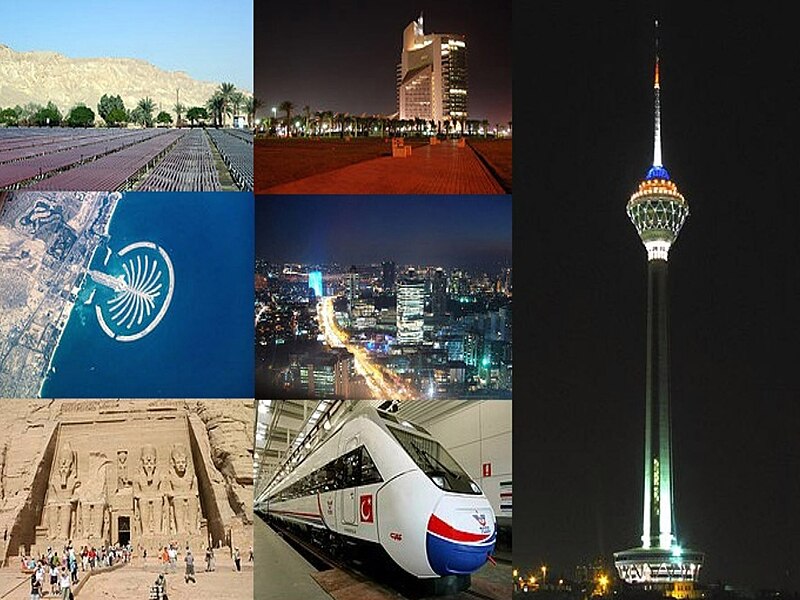The current economic situation in the Middle East is a complex tapestry woven from diverse factors, including geopolitical dynamics, resource distribution, demographic trends, and global economic shifts. With some countries rich in natural resources while others struggle with scarcity, the region presents a varied economic landscape.

Oil Dependency and Economic Diversification
A significant portion of Middle Eastern economies relies heavily on oil exports. Countries like Saudi Arabia, the United Arab Emirates (UAE), and Kuwait benefit enormously from their oil wealth, which constitutes a large part of their GDP and government revenues. However, this dependency poses a vulnerability; fluctuations in global oil prices can lead to economic instability. In recent years, the price of oil has seen significant volatility due to geopolitical tensions, changes in production levels by OPEC, and the global shift towards renewable energy sources.
Recognizing this risk, several countries in the region have initiated economic diversification plans. Saudi Arabia's Vision 2030 is one of the most ambitious efforts, aiming to reduce the kingdom’s oil dependency by investing in sectors such as tourism, entertainment, and technology. Similarly, the UAE is focusing on becoming a global hub for finance and innovation, with initiatives to attract foreign investments into non-oil sectors.
Geopolitical Tensions and Economic Impact
Geopolitical tensions continue to shape the economic landscape of the Middle East. Conflicts in countries such as Syria, Yemen, and Libya have disrupted trade routes, led to humanitarian crises, and displaced populations. These tensions not only affect the local economies but also have regional ramifications, impacting investment flows and trade relations with global partners.
Iran's economic situation is particularly illustrative of how geopolitical issues can create economic challenges. Continuing sanctions related to its nuclear program have severely hampered its economy, leading to inflation, unemployment, and a devalued currency. The economic isolation has also pushed Iran to strengthen ties with other regional powers like Russia and China in search of new markets and investment sources.
Demographic Trends and Youth Unemployment
The Middle East has a youthful population, with a significant percentage under the age of 30. While this demographic can be a source of vitality and innovation, it also presents challenges, particularly concerning employment. Many young people face high unemployment rates, especially in countries beset by conflict or economic mismanagement.
Countries like Egypt and Jordan, where the job market struggles to absorb new entrants, have witnessed rising discontent among youth. Governments are pressured to create jobs and foster environments conducive to entrepreneurship. Initiatives to promote vocational training and support small to medium-sized enterprises (SMEs) are critical in addressing youth unemployment, but challenges remain significant.
Global Economic Influences and Reform
Economic globalization has not overlooked the Middle East; external factors, including trade policies and foreign direct investments (FDIs), play a crucial role in shaping local economies. The region's strategic location as a crossroads for trade between Europe, Asia, and Africa offers opportunities for growth. However, to fully benefit from globalization, many Middle Eastern economies must undergo substantial reforms to improve the business environment, tackle corruption, and ensure economic transparency.
Countries like the UAE have taken significant steps in recent years to enhance their economic appeal, implementing free zones, low taxation, and streamlined business regulations to attract international investors. However, neighboring countries often exhibit less favorable environments, affected by bureaucratic hurdles and political instability.
Environmental Challenges and Economic Sustainability
Environmental issues, particularly water scarcity and climate change, significantly impact the region's economic situation. The Middle East is one of the most arid regions in the world, and its water resources are under immense strain due to population growth, agricultural demands, and industrial usage. Decreased water availability could undermine agricultural productivity and public health, leading to further economic challenges.
In response, countries are increasingly investing in sustainable technologies, such as desalination and renewable energy projects like solar and wind power. Solar energy, in particular, has the potential to revolutionize the energy landscape in the Gulf region, providing a sustainable alternative to oil while addressing the growing energy demands of burgeoning populations.
Conclusion
The economic situation in the Middle East is shaped by a multitude of factors, including oil dependency, geopolitical tensions, demographic pressures, and environmental challenges. While some countries show signs of significant progress through diversification and reform, others continue to grapple with instability and the repercussions of a reliance on oil revenues. Moving forward, the ability of Middle Eastern nations to adapt to global changes, invest in their youth, and create sustainable economic systems will be crucial for their overall development and stability in the coming years.












